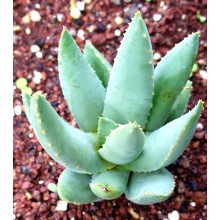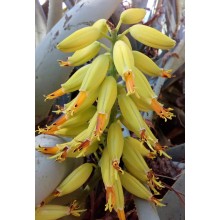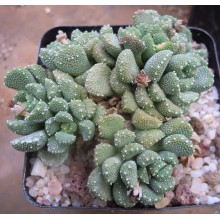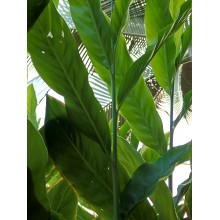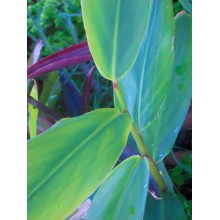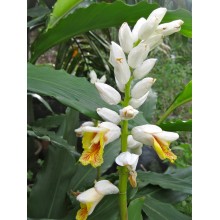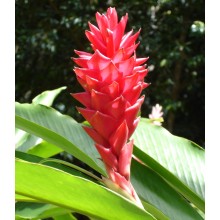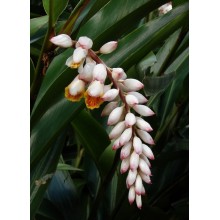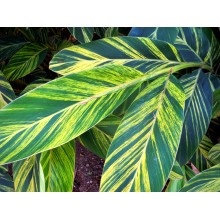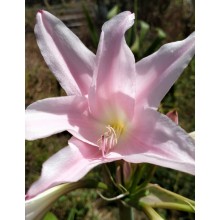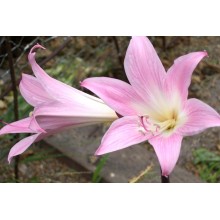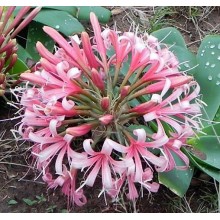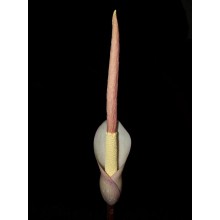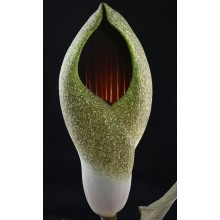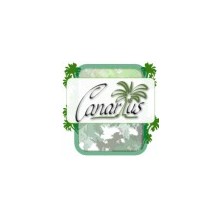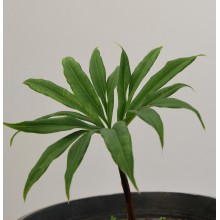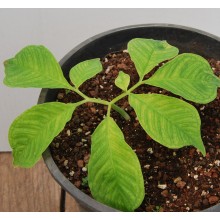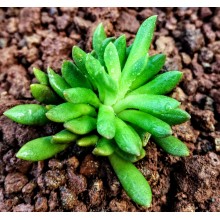Plantes générales Il y a 1882 produits.

Si vous aimez les plantes exotiques, vous venez au bon endroit. Canarius offre le dur-à-trouver des plantes exotiques qui sont rarement disponibles dans les centres de jardin. Notre magasin a des espèces naturelles ainsi que des hybrides rares. Nous offrons des plantes exotiques en provenance des Îles Canaries.
Les commandes sont envoyées partout en Europe et aussi dans le monde entier. Les colis seront atteindre votre maison dans quelques jours après l'expédition (mais nous avons aussi besoin de quelques jours pour le traitement). N'hésitez pas à nous contacter si vous avez des questions.
Sous-catégories
-
Succulentes
Les plantes les plus intéressantes habitent dans les déserts du monde et les zones sèches. Canarius propose une sélection croissante de plantes succulentes de qualité maximale, car elles sont cultivées à l'extérieur en plein soleil des Canaries.
Les succulentes ou «plantes grasses» sont des espèces de rétention d'eau, adaptées aux conditions sèches. Ils stockent succum (jus, eau) dans leurs feuilles, les tiges ou racines, et ils présentent souvent une apparence robuste et charnue.
-
Exotiques
Les plantes exotiques sont des espèces provenant de contrées éloignées, qui ne sont pas dans leur habitat naturel. Généralement, elles sont à caractère décoratif, elles disposent d’un feuillage dense avec des fleurs de couleur vive et ont une forme inhabituelle… Ci-après, vous pourrez découvrir une grande variété de plantes exotiques, allant des broméliacées, héliconies et palmiers aux plantes d’intérieur.
Les plantes exotiques n'ont pas forcément d'utilité particulière, les collectionneurs achètent ce genre de plantes avant tout pour leur rareté et pour décorer des espaces intérieurs ou en plein air, selon l’environnement.
-
Fruits, Herbes et Plantes Médicinales
Les Fruits, les Herbes et les Plantes Médicinales sont destinées à offrir une meilleure santé. Dans cette section, chaque type de plante offre des propriétés bienfaisantes, que ce soit des arbres fruitiers (le Feijoa, l’Ananas, le Fino de Jete, etc.) et des plantes pour la santé, telles que le Graviola, l’Aloe Vera, le Callisia fragrans, etc. Au sein du métabolisme normal des êtres vivants, l’organisme produit certaines substances à partir de nutriments latents dans l’environnement; certaines de ces réactions chimiques font partie du processus de toutes (ou presque) les espèces. Normalement, les composants utiles sont concentrés dans certaines parties: feuilles, graines, fleurs, etc. Découvrez quelle plante vous est recommandée et achetez-la en ligne!
-
Spécial
Sur canarius.com, nous essayons de repousser les limites du domaine de la botanique. Sur notre boutique en ligne, nous tentons de facilité le processus achat/vente des plantes partout dans le monde. C’est pourquoi, nous cultivons les espèces les plus communes ainsi que les plantes les plus spéciales, comme nous pouvons le voir dans cette section.
-
Aloidendron dichotomum 'Namibia'
Aloidendron dichotomum 'Namibia'
Aloidendron dichotomum is one of the most beautiful of the tree-aloes. has a very wide distribution of hundred of kilometers spanning from Namibia to RSA.
25,30 € -
Aloidendron dichotomum - RSA
Aloidendron dichotomum - RSA
One of the most exotic of all desert trees: this tree aloe stands out in dry areas of Namibia and South Africa. Throughout much of its range this species is in decline.
12,40 € -
Aloinopsis luckhoffii
Aloinopsis luckhoffii
Low growing clumping mesemb with beautiful warty leaves.
10,60 € -
Alpinia galanga - Blue Ginger
Alpinia galanga - Blue Ginger
Galangal or Blue Ginger is a herb used in cooking in SE Asia, and also medicinally. It grows as a tight clump of lush, upright dark-green leaves. Upright inflorescences of small white flowers are produced throughout the warmer months.
28,30 € -
Alpinia nigra - Greater Galangal
Alpinia nigra - Greater Galangal
This mid-sized ginger with ornamental dark green foliage is used throughout SE Asia in many ways: rhizomes are cooked as seasoning or as a medicine. Young shoots are used in many Asian dishes. The inner portion of the aerial shoots is cooked as a vegetable and used in curry for flavouring. It can be kept in a pot for years and will stay small.
32,50 € -
Alpinia nutans
Alpinia nutans
This is a cool-growing species of Alpinia, which is possibly the frost-hardiest in the genus. It is similar to Alpinia zerumbet, but shorter in stature with wavier leaf margins. Our rhizomes are uprooted from adult, blooming, mother plants. This ginger is also used medicinally.
22,05 € 31,50 €Prix réduit ! -
Alpinia purpurata 'Pink'
Alpinia purpurata 'Pink'
White flowers protected by pink bracts with a beautiful ornamental effect. True flowers are small and white, spirelike inflorescence up to 30cm . After flowering, several seedlings appear in the bracts. In milder climates it prefers full sun.
38,00 € -
Alpinia zerumbet
Alpinia zerumbet
This ornamental and medicinal Asian ginger has lush, large, dark-green leaves. Large plants will eventually bloom with a spectacular inflorescence of white and yellow flowers, reminiscent of orchids.
21,91 € 31,30 €Prix réduit ! -
Alpinia zerumbet Variegata
Alpinia zerumbet Variegata
One of the showiest variegated plants in the world ! This Asian plant from the ginger family has large dark-green leaves striped in a rich yellow. Large plants will eventually bloom with a spectacular inflorescence of white and yellow flowers, reminiscent of orchids. This plant is used medicinally in a lot of surprising ways.
29,52 € 32,80 €Prix réduit ! -
Alpinia luteocarpa
Alpinia luteocarpa
Native from the philipines, this alpinia is a perennial, evergreen, rhizomatous herbaceous species that forms dense clumps and reaches heights up to 1,5 meters.It is used as an ornamental plant and occasionally cultivated as a houseplant.
28,60 € -
Amarcrinum x 'Howardii'
Amarcrinum x 'Howardii'
This ornamental hybrid is a showy bulbous perennial and flowers repeatedly from July to October with gorgeous pink flowers. It is evergreen and the whole plant looks a bit like some tropical Crinum species but it is a frost-hardy plant, good to create a tropical look in a non tropical garden.
17,30 € -
Amaryllis belladonna
Amaryllis belladonna
Deciduous South African bulb from the Cape Province, with large pink flowers.
10,20 € -
Ammocharis coranica
Ammocharis coranica
Ammocharis is a majestic, South african bulb from the summer-rainfall desert.
43,20 € -
Amorphophallus atroviridis - LARGE
Amorphophallus atroviridis - LARGE
Atro-viridis means dark-green in Latin: Leaves have wide leaflets and a red margin. They are also all-red below and the petiole has red blotches. The inflorescence is a beauty too.
27,40 € -
Amorphophallus dracontioides
Amorphophallus dracontioides
A medium sized, rarely available species from Western and Central Africa, with large leaves, to 1,2 m tall, with narrow blades, often >50 cm in diameter.
87,20 € -
Amorphophallus gallaensis
Amorphophallus gallaensis
This species stands out for the beauty of its wide inflorecence, which is "chocolate coloured", with changing hints of purple, reds and greens.
63,00 € -
Amorphophallus haematospadix - Adult
Amorphophallus haematospadix - Adult
Marvelous inflorescence with a red-to-blue spadix coming out of a cream white spathe. The leaf is solitary, with tapering leaf tips and spectacular prominent midribs (seen from below). This hard to find Amorpho is native to Peninsular Thailand to Peninsular Malaysia, where it grows on limestone.
38,00 € -
Amorphophallus polyanthus - Adult
Amorphophallus polyanthus - Adult
Amorphophallus polyanthus is found in one location in NE Thailand, where it grows in deep shade at the base of rocky outcrops. It is low-growing, with rounded-rhombic leaflets, 3-10 cm long, and nice inflorescences with short spathes with purple tones.
34,60 € -
Anacampseros marlothii
Anacampseros marlothii
Tuft forming Anacampseros from the Northern Cape province in South Africa.
10,30 €
Pour le moment, il ya peu de produits dans cette catégorie Plantes générales




















